Unparalleled history lingers around every corner here in Newport. From the oldest continually operating lending library in the country to the oldest standing Jewish synagogue in North America, travel between sites and centuries when you walk these streets, roam these hallways and explore this coast.
National Historic Landmarks
Below are 18 National Historic Landmarks to visit while you're here.
Isaac Bell House
Back to Top of ListThe Isaac Bell House is one of the best surviving examples of shingle-style architecture in the United States. The house was designed 1883 for Isaac Bell, a wealthy cotton broker and investor. Located on historic Bellevue Avenue, it flaunts a combination of Old English and European architecture with colonial American and exotic details, like a Japanese-inspired open floor plan and bamboo porch columns.
After passing through a succession of owners, the house was purchased by the Preservation Society in 1996.

The Elms
Back to Top of ListWelcome to the summer retreat of Philadelphia coal magnate Mr. and Mrs. Edward Julius Berwind! The Elms, a 48-room mansion on historic Bellevue Avenue, was modeled after the mid-18th-century French chateau d'Asnieres (c.1750) outside Paris. Construction was completed in 1901, and the Berwinds wasted no time filling the estate with their collection of Renaissance ceramics, Venetian paintings, tapestries and Oriental jades, many of which are still on display today.
The Preservation Society of Newport County purchased The Elms in 1962 and opened the house to the public. In 1996, it was designated a National Historic Landmark.
Chateau-sur-Mer
Back to Top of ListChateau-sur-Mer is considered one of the first great mansions in Newport. It was the most palatial residence in Newport from its completion in 1852 until the appearance of the Vanderbilt houses in the 1890s, and was originally built as an Italianate-style villa for China trade merchant William Shepard Wetmore. When Mr. Wetmore died in 1862, his son left architect Richard Morris Hunt to remodel and redecorate the estate in the Second Empire French style. Chateau-sur-Mer's grand scale and lavish parties are said to have ushered in the Gilded Age of Newport.
The house was purchased by the Preservation Society in 1969 and designated a National Historic Landmark in 2006.
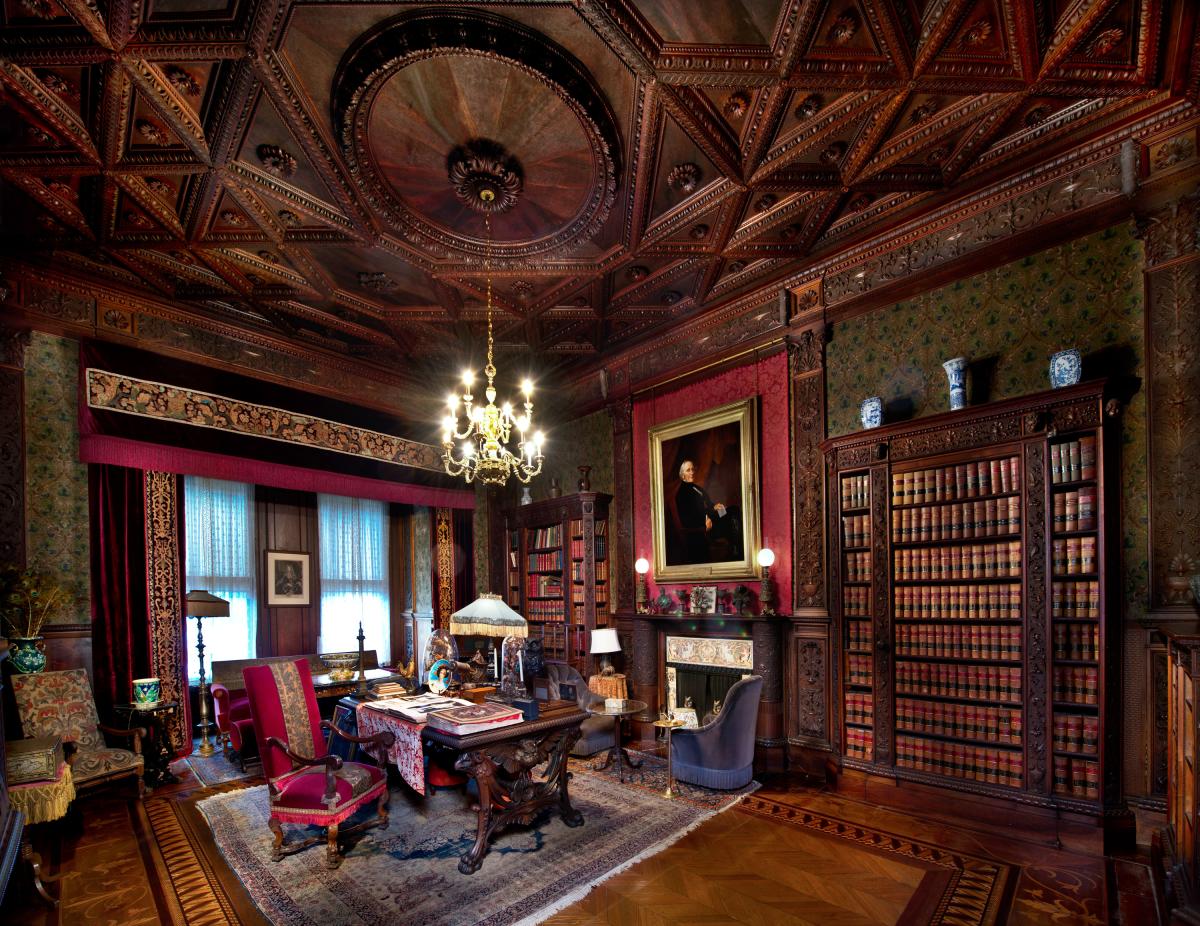
Fort Adams
Back to Top of ListOnce a military stronghold known as "The Rock on Which the Storm Shall Beat," Fort Adams is the largest coastal fortification in the country. It was constructed between 1824 and 1857, and commissioned to defend Narragansett Bay against attack. At the start of construction, hundreds of Irish arrived in Newport to help lift, dig and build the site, which was designed to mount 468 cannons and house 2,400 troops. Construction took 33 years.
Today, you can view the quarters where officers and their families lived, ascend to the scenic overlook for unparalleled views of the bay, travel beneath the walls into the underground tunnels, or even rent the barracks for an overnight stay. It's also the spot where some of Newport's most iconic festivals started and continue to take place, like the Newport Folk Festival and Newport Jazz Festival.
Griswold House
Back to Top of ListThe Griswold House, home to Newport Art Museum, was built in 1864 by Richard Morris Hunt for John Griswold, an Old China Trade merchant and member of the Griswold Family. The house is one of the earliest American Stick–style buildings and one of Hunt's first works in Newport.

Marble House
Back to Top of ListMarble House was a social and architectural landmark that set the pace for Newport's subsequent transformation from a quiet summer colony of wooden houses to the legendary resort of opulent stone palaces at the time it was built between 1888 and 1892. It was designed by architect Richard Morris Hunt, inspired by the Petit Trianon at Versailles. The cost of the house was reported in contemporary press accounts to be $11 million, of which $7 million was spent on 500,000 cubic feet of marble. Upon its completion, Mr. Vanderbilt gave the house to his wife as a 39th birthday present.
The Preservation Society acquired the house in 1963 from the Prince estate. In 2006, it was designated a National Historic Landmark.
Hunter House
Back to Top of ListHunter House is one of the finest examples of Georgian Colonial architecture from Newport's "golden age" in the mid-18th century. The north half of the house was constructed between 1748 and 1754 by Jonathon Nichols, Jr., a prosperous merchant and colonial deputy. After his death in 1756, the property was sold to Colonel Joseph Wanton, Jr., who expanded the house by adding a south wing and a second chimney, transforming the building into a formal Georgian mansion.
Today, the house exhibits examples of the finest achievements in the arts and crafts of 18th century Newport.

Kingscote
Back to Top of ListKingscote is a landmark of the Gothic Revival style in American architecture and one of the first summer "cottages" built in Newport.
The house was originally constructed. for George Noble Jones, owner of the El Destino and Chemoni cotton plantations in Florida. When the Jones family left Newport at the outbreak of the Civil War, Kingscote was sold to China trade merchant William Henry King. His nephew took over the house in 1876, and several years later decided to enlarge Kingscote. He added a new service wing and larger dining room, which combines Colonial American details with exotic ornament.
The King family owned the house until 1972, when the last descendant bequeathed it to the Preservation Society along with all the furnishings as of about 1880.
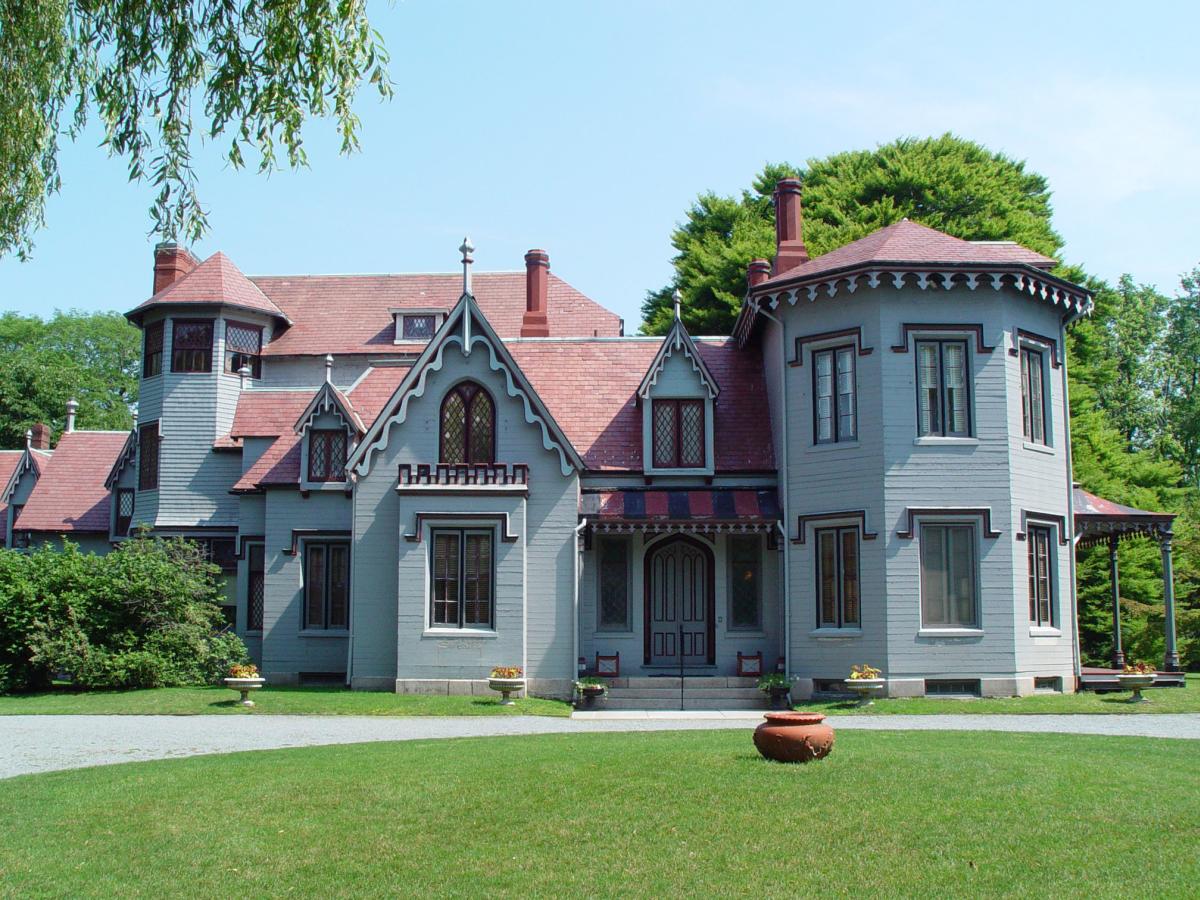
The Breakers
Back to Top of ListThe Breakers is the grandest of Newport's summer "cottages" and a symbol of the Vanderbilt family's social and financial preeminence in turn-of-the-century America. In 1893, after the original wooden house burnt down, Richard Morris Hunt directed an international team of craftsmen and artisans to construct the 70-room Italian Renaissance-style palazzo in its place, inspired by the 16th century palaces of Genoa and Turin.
Newport Casino
Back to Top of ListThe Newport Casino was first opened on July 26, 1880 as a social club for Newport’s turn of the century summer elite. Built in only six months, Newport Casino was the center of Newport's social society offering a block of shops on Bellevue Avenue, a restaurant and gentlemen’s lodging. Archery, billiards, concerts, dancing, dining, horse shows, lawn bowling, reading, tea parties and theatricals and more. Today it's home to the International Tennis Hall of Fame, shops, and restaurants.
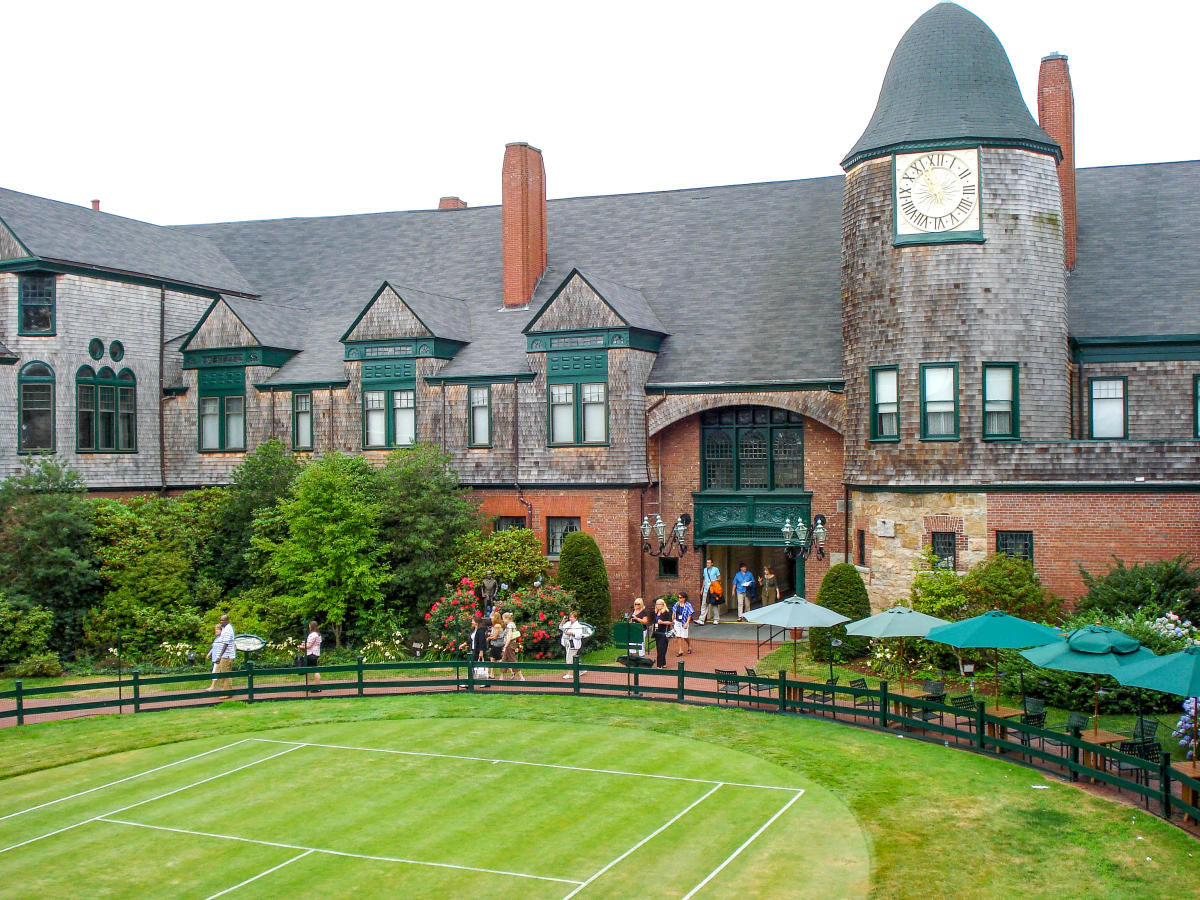
Ocean Drive
Back to Top of List10 miles of commanding coastline meets one winding road on Newport’s iconic Ocean Drive. Start your journey just off historic Bellevue Avenue and continue along for an undeniably tranquil journey with heart-stopping views. You’ll pass by Gilded Age mansions, Hammersmith Farm where Jackie Kennedy grew up, Brenton Point State Park, Fort Adams State Park, and Gooseberry Beach, a favorite summertime spot. Don’t forget to roll the windows down to catch the soothing sound of rippling waves meeting the shoreline.
The Ocean Drive Historic District was designated a National Historic Landmark District in 1976 for its unique landscape and architecture, which is less formal and generally not as ostentatious as the grand summer properties on Bellevue Avenue.
Newport Colony House
Back to Top of ListThe Newport Colony House is the fourth oldest statehouse still standing in the United States. Many important events associated with the shaping of the United States occurred here; In 1761, the death of George II and the ascension of George III was announced from the balcony. In 1766, citizens of Newport celebrated the repeal of the Stamp Act in and around the Colony House. On July 20, 1776, Major John Handy read the Declaration of Independence from the front steps. During the British occupation of Newport from 1776 to 1779, the Colony House was used as a barracks.
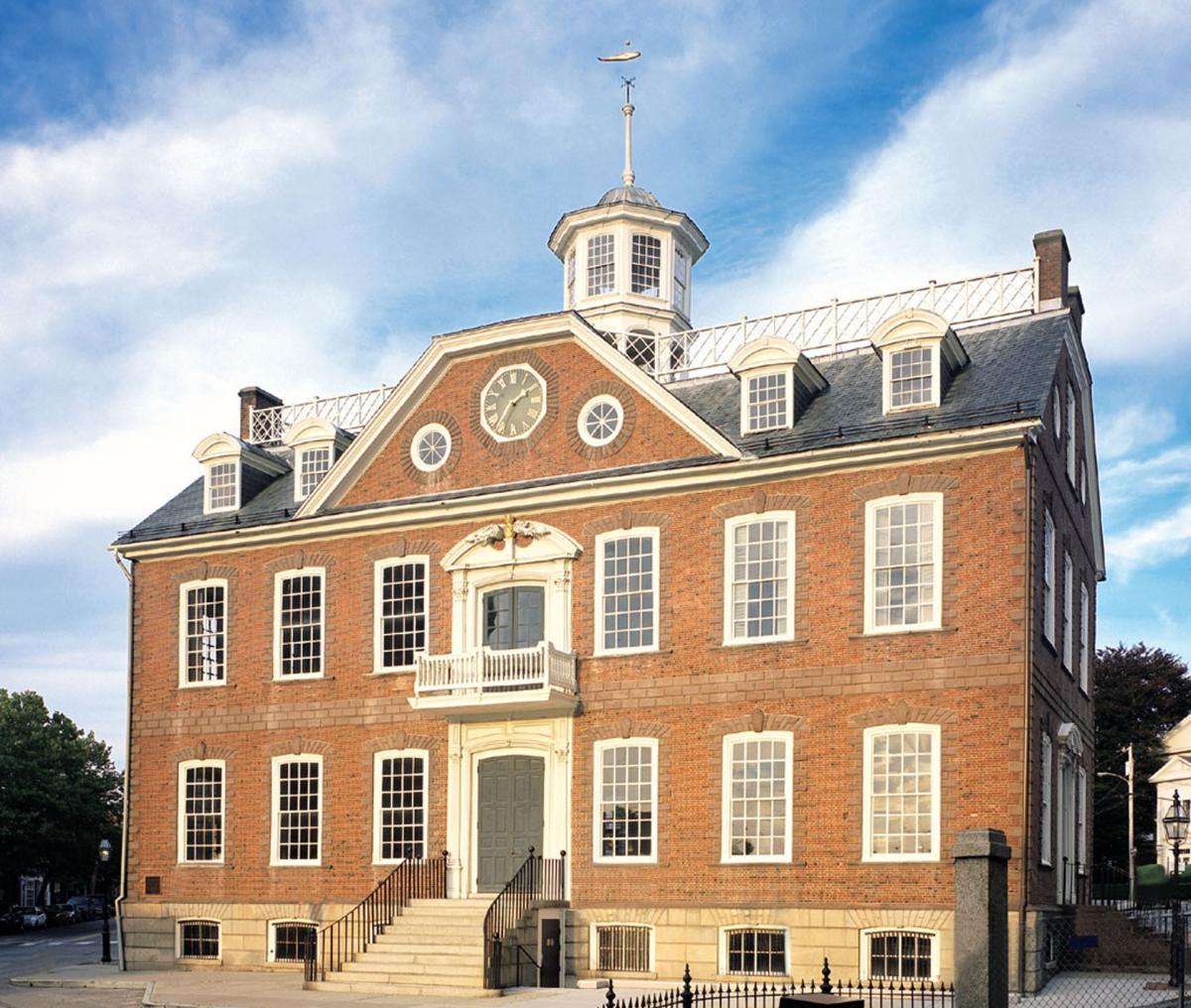
Touro Synagogue
Back to Top of ListBuilt between 1759 and 1763, the Touro Synagogue is the oldest synagogue building still standing in the United States, the oldest surviving Jewish synagogue building in North America and the only surviving synagogue building in the U.S. dating to the colonial era. It was designed by notable British architect Peter Harrison and is considered his most notable work.
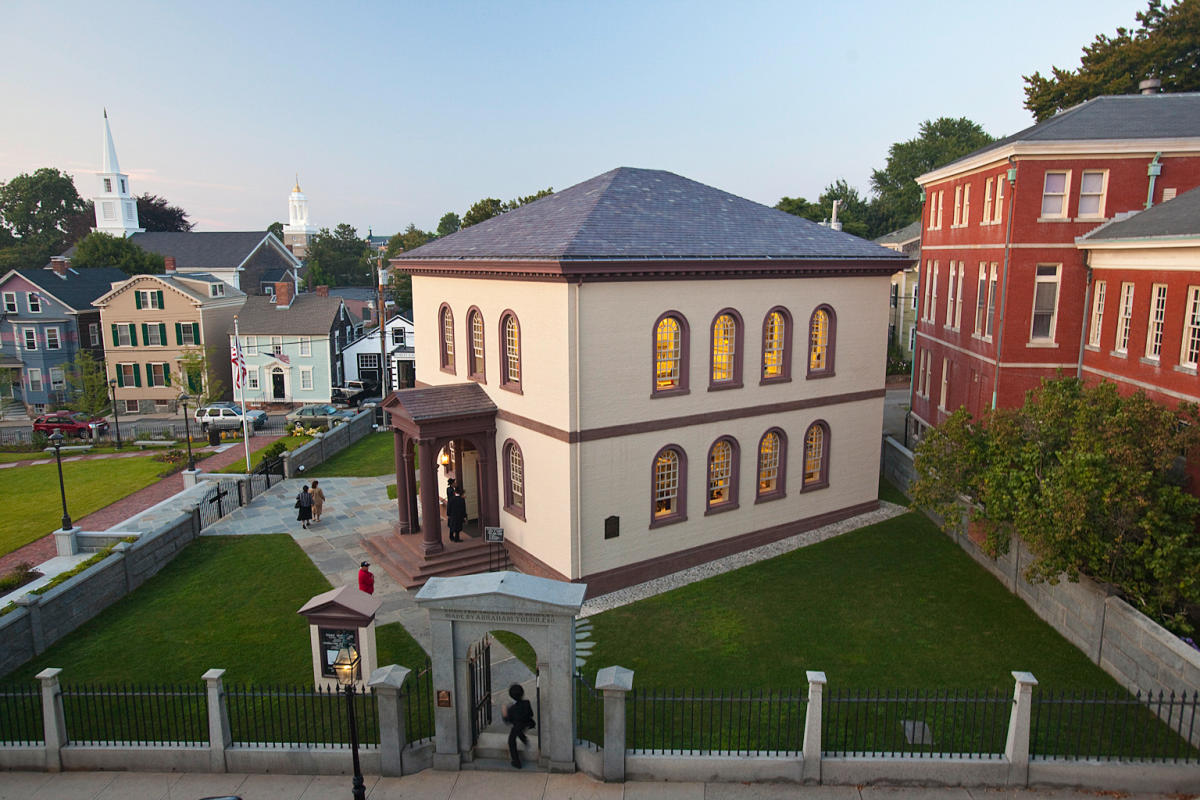
U.S. Naval War College
Back to Top of ListLegend has it that in 1884, Commodore Stephen B. Luce, USN, rowed ashore to Newport and proceeded to a large stone building, the former Newport Asylum for the Poor. He climbed its rickety stairs and announced to his travel companions and the empty grounds, "Poor little poorhouse, I christen thee United States Naval War College."
Today, the "Little Poorhouse" is a well-preserved and stately structure, and home to the U.S. Naval War College Museum.
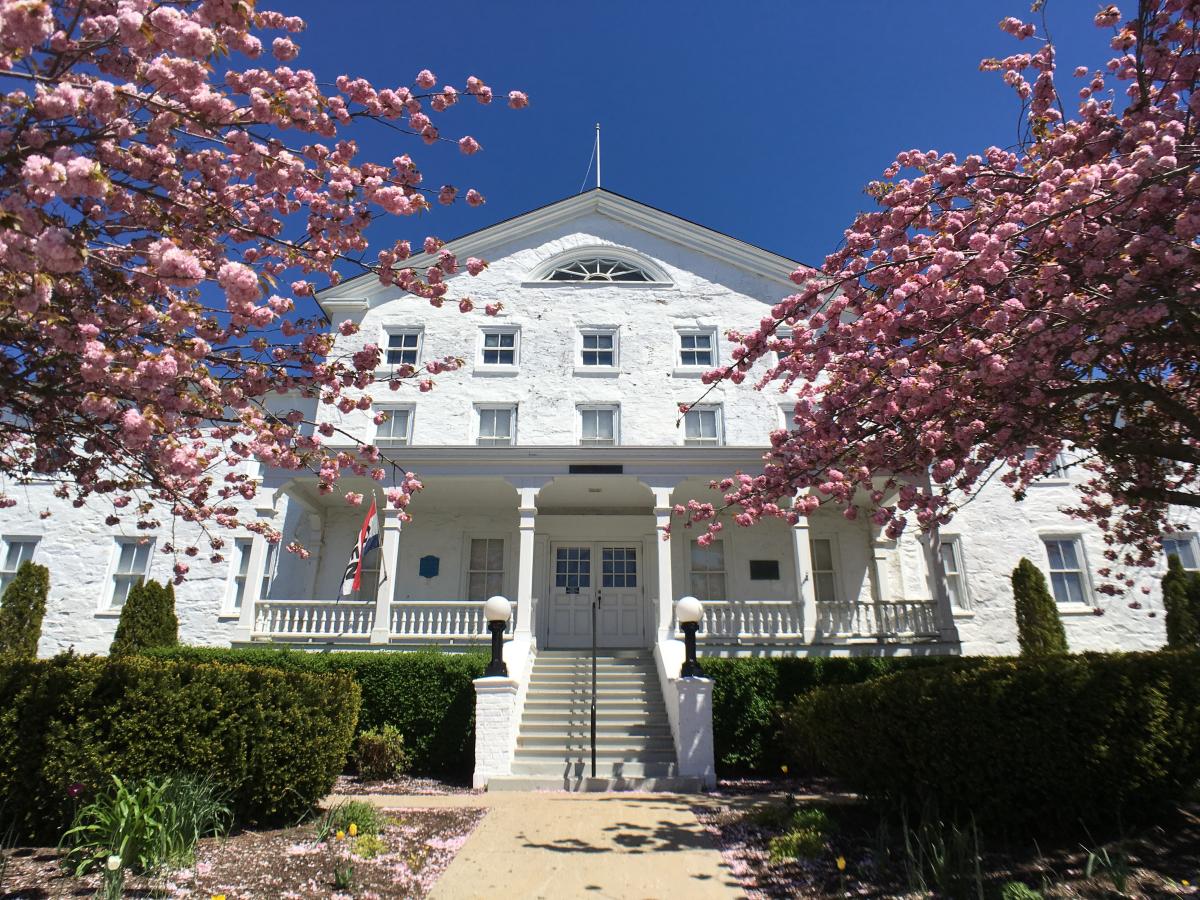
Redwood Library
Back to Top of ListOf all the early libraries founded in the American Colonies, Redwood Library and Athenæum is the oldest one still housed and operating in its original building. It was established in 1747 by Abraham Redwood and 45 colonists with the goal of making written knowledge more widely available.
During the Revolutionary War, the Redwood Library was used as an officer’s club and many of the books on the shelves disappeared. In 1947, a concerted effort was made to replace the original collection. Today, Redwood houses approximately 92% of the volumes that were lost.
The Redwood Library was designated a National Historic Landmark in 1966.
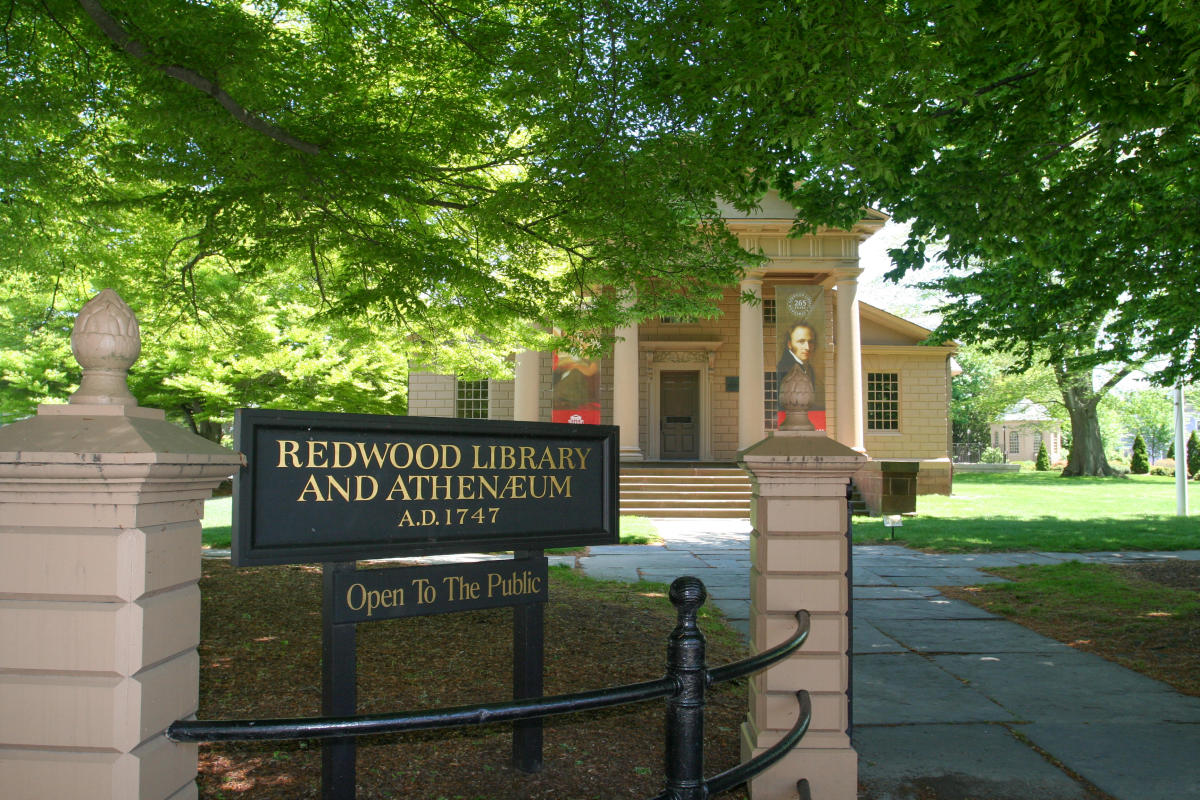
Trinity Church
Back to Top of ListTrinity Church is Rhode Island's oldest Episcopal congregation, and home to the only center-aisle, freestanding, triple-decked pulpit left in America today. Keep an eye out for box pew on the south side of the main aisle, adjacent to the Clerk's Desk, ornamented with engraved silver plaques. It commemorates famous visitors seated there. The earliest is George Washington; others include Queen Elizabeth II, Prince Andrew, and Archbishop Desmond Tutu and his wife Leah.
United Congregational Church
Back to Top of ListNewport Congregational Church is the only surviving comprehensive architectural interior by John LaFarge. In the 1880s, the congregation hired LaFarge to redecorate the interior. LaFarge had recently completed work on Trinity Church, Boston, and hoped to create a more elaborate interior than he was able to in Boston. He created twenty stained glass windows and a number of murals, the only fully integrated ecclesiastical interior he produced.
Wanton-Lyman-Hazard House
Back to Top of ListThe Wanton-Lyman-Hazard House is the oldest surviving house in Newport. It was originally built with a single room on each side of a central chimney. Sometime before 1725, a kitchen was built at the northeast end of the house. When Martin Howard bought the house he installed fine paneling and handsome moldings, all in keeping with the high-style taste that was of utmost important to refined Newporters during this time, ultimately defining Howard as a person of social standing. The Lyman family, which needed more room as it grew to include thirteen children, added a large two-story addition to the rear of the house around 1785.

more to explore
GET SOCIAL
Tag your photos #TheClassicCoast for the chance to be featured on our accounts.























